Awesome Red Leaved Houseplants to Add Color to Your Home
Indoor plants with red leaves can add a bit of color and drama to your decor as well as serve as a focal point for an area of your home or room.
In all honesty, there are few true bright red leaved houseplants, but there are several plants with reddish/ pink or reddish purple leaves as well as plants that feature large areas of red, all of which are considered red leaved house plants.
Here is a look at some of the more popular or unique red leaved house plants.
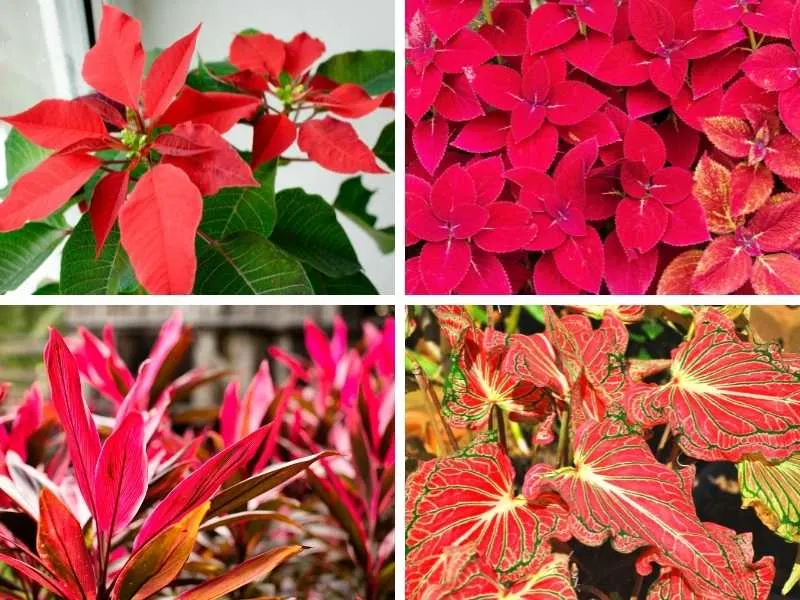
Related Articles:
8 Colorful Indoor Plants with Red Leaves
#1. Poinsettia
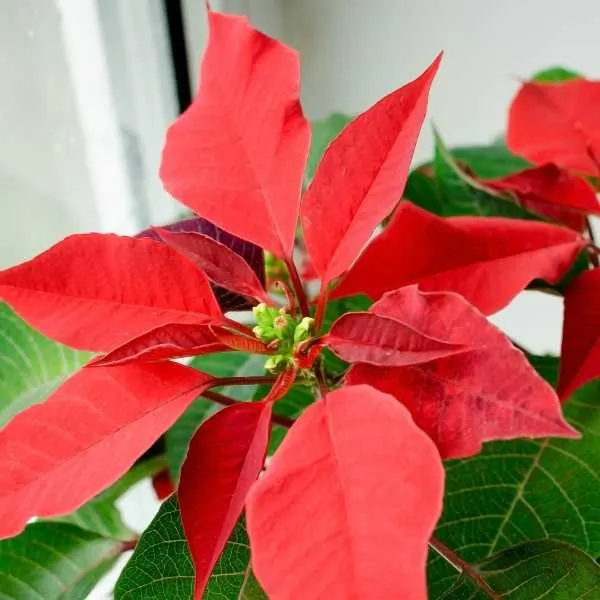
The poinsettia plant originated in Mexico and the traditional red poinsettia is an extremely popular plant during the Christmas holidays.
However, most people mistake the red leaves of this plant as the actual flower. In reality this plant is made up of green leaves, on top of which grows red pointy leaves that appears from winter to early spring.
The actual flowers of this plant are little yellowish green seed like balls in the center of the red leaves.
The Poinsettia plant can grow anywhere from 3 feet and 10 inches tall and 3 feet 7 inches wide. This shrub does well when grown in full or partial sunlight and loamy well-drained soil.
These plants are not only grown inside, but are also used as landscape shrub in warmer areas. They plants grow best in zones 9 through 11. This plant may be slightly toxic to dogs and cats if they chew on it.
#2. Coleus
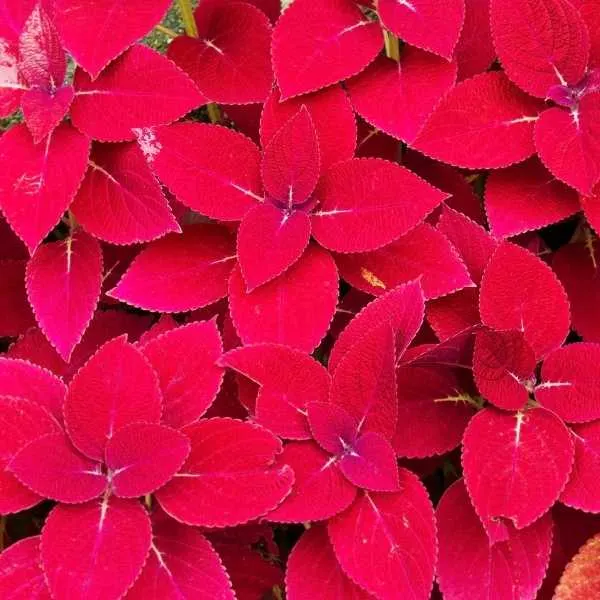
The Coleus plant is a member of the mint family. There are several varieties of this plant and the two varieties with the reddest leaves are El Brighto and Rediculous.
These are low maintenance plants that rarely flower when grown indoors, but the leaves of the plant are the real eye catching aspect of the plant.
Depending on the variety of plant, Coleus plants can grow anywhere from 6 inches to 3 ½ feet tall and 1 to 3 feet wide. The various shaped leaves can run anywhere from 1 to 6 inches long. These plants prefer full or partial sun and moist well-drained soil.
When grown out of doors these plants thrive in zones 10 and 11.
#3. Florida Sweetheart Caladium
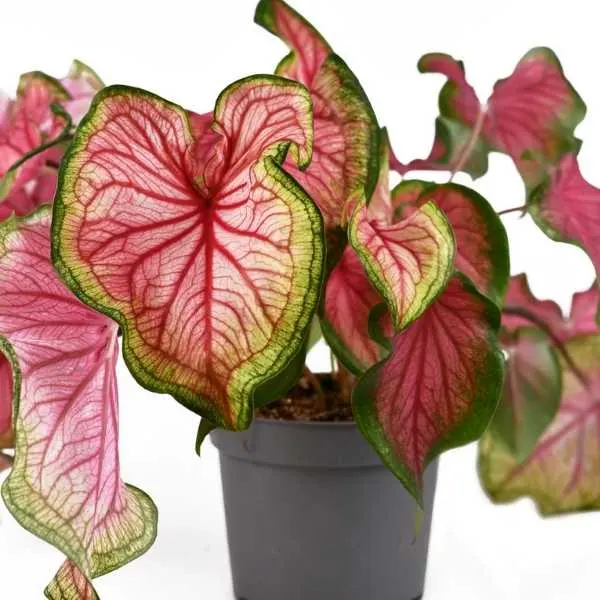
There are several different varieties of the Caladium plant. One of these plants with mostly red leaves is the Florida Sweetheart Caladium.
This plant is noted for its light red or pink leaves with darker red veins and green edges. The large heart shaped leaves makes the Sweetheart Caladium perfect for hanging baskets.
This plant is not overly difficult to care for, but does need attention. It is heat tolerant and does best in partial sunlight with moister rich soil. The plant can be toxic if ingested.
When grown outside this plant grows best in zones 9 through 11.
#4. Aglaonema Red Anjamani
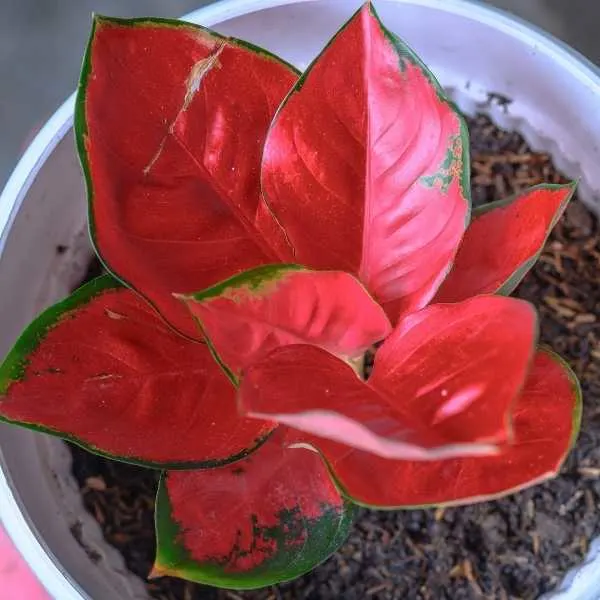
The Red Anjamani is a Chinese evergreen plant that is easy to care for. This plant is known for its oval spear shaped red leaves with green veining and edges.
When grown inside the house, this plant can grow up to 3 feet tall with leaves between 4 and 12 inches long. This stunning plant can add beauty and color to any room of your home if cared for properly.
The Red Anjamani prefers indirect sunlight with temperatures of at least 60 degrees Fahrenheit. It also prefers an environment with 60% humidity.
When grown out of doors this plant thrives in zones 10 and 11.
#5. Ti Plant
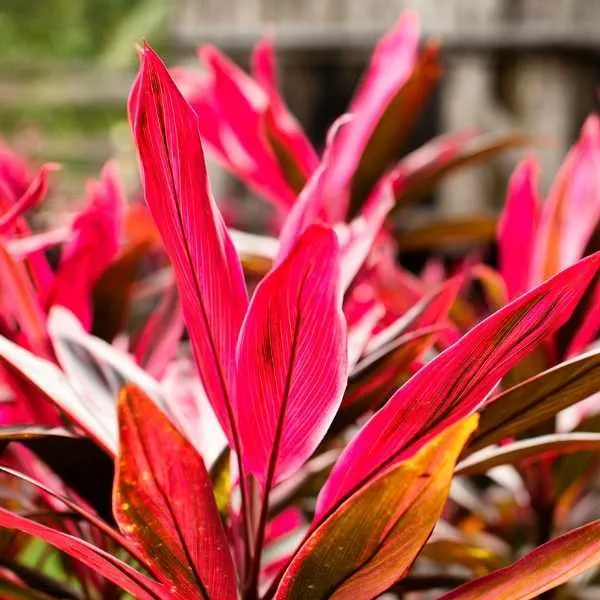
The Ti Plant is a woody evergreen plant that is native to Hawaii and the Pacific Islands as well as Asia and Australia. The foliage of this plant comes in various shades including red.
This plant is slow growing especially when grown indoors as a houseplant. It is known for its sword shaped leaves that can grow 1 to 2 feet in length and 4 inches wide. Due to its slow growing nature this plant only needs to be repotted every 2 or 3 years.
The Ti plant does best in medium to bright light and loamy and moist, but well drained soil. This plant needs to be kept in a room without drafts and where the temperatures are 50 degrees or above and a decent amount of humidity.
When grown out of doors the Ti plant does best in zones 10 and 11.
#6. Chicken Gizzard Plant
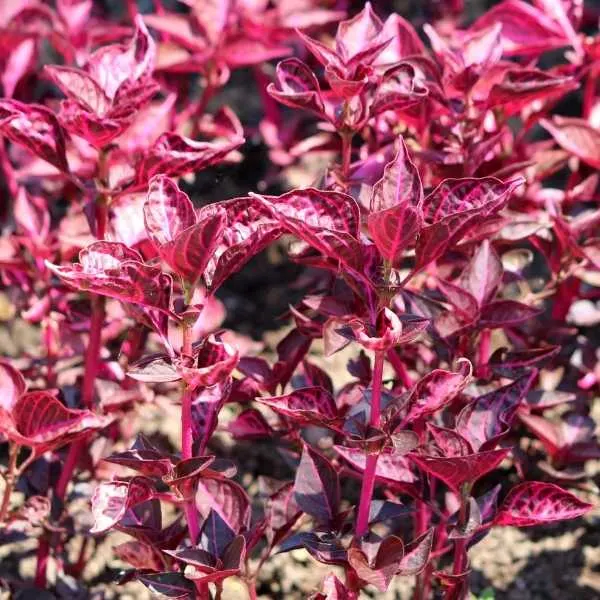
The Chicken Gizzard Plant also known as the Bloodleaf plant is native to South America and can be grown indoors or out of doors. This plant is known for it’s purple-reddish quilted looking leaves and pinkish red stem.
Although this plant can survive in all different light conditions it does best when placed in indirect light and loamy sandy well-drained soil. It also prefers temperatures no lower than 50 to 60 degrees Fahrenheit and an above average humidity. When grown indoors the use of a humidifier may help.
When grown outside this plant does best when plant in zones 9b to 11.
#7. Polka Dot Plant

Native to Madagascar the Polka Dot Plant is an eye catching plant that is known for its brightly colored variegated leaves. These plants have a colorful base color with green polka dots including some plants with a red base and green polka dots.
The polka dot plant can be grown indoors or outdoors. This plant normally grows 1 to 2 feet tall and thrives in filter sunshine and moist well-drained soil. This plant needs warm temperatures (over 60 degrees Fahrenheit) and 50% humidity. It also needs to be watered regularly.
When grown outdoors the Polka Dot plant does best in hardiness zones 10 and 11.
#8. Red Star Bromeliad (Cryptanthus Bivittatus)
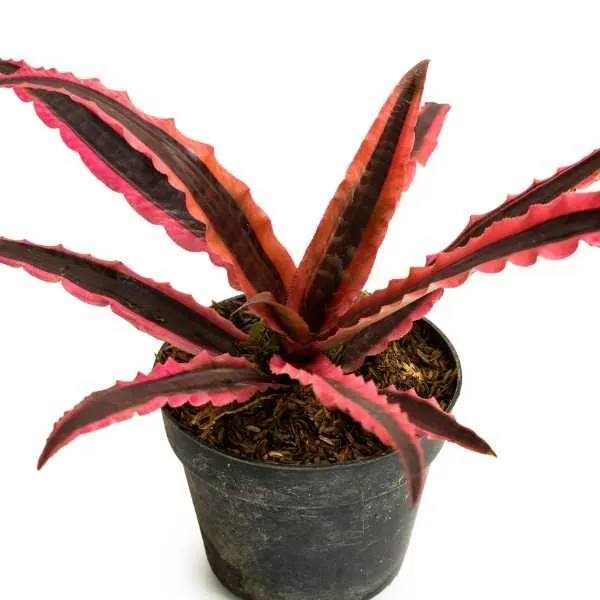
The Red Star or Earth Star Bromeliad is a plant native to Brazil. These plants are often grown in terrariums and are made up of stemless rosettes of leaves. Each plant is made up of 10 to 20 leaves that are red or pink with a green stripe in the center. The leaves of this plant are edged with tiny thrones.
The Red Star Bromeliad grows about 6 inches tall and 15 inches wide. This plant grows best under slightly shady light conditions and well-drained sandy soil, preferring temperatures of at least 55 to 65 degrees Fahrenheit. When grown outside this plant does best grown in zones 10 and 11.
This plant has small flowers after which the plant tends to send out “Pups” (small plants) and then dies back. The pups then replace the old plant that is dying out.
Final Thoughts on Houseplants with Red Leaves
Adding an indoor plant with red leaves to your home can add a touch of interest and drama to your home. Finding a red leaf plant that is right for you is simply a matter of finding one that you like and can provide with the right care.

